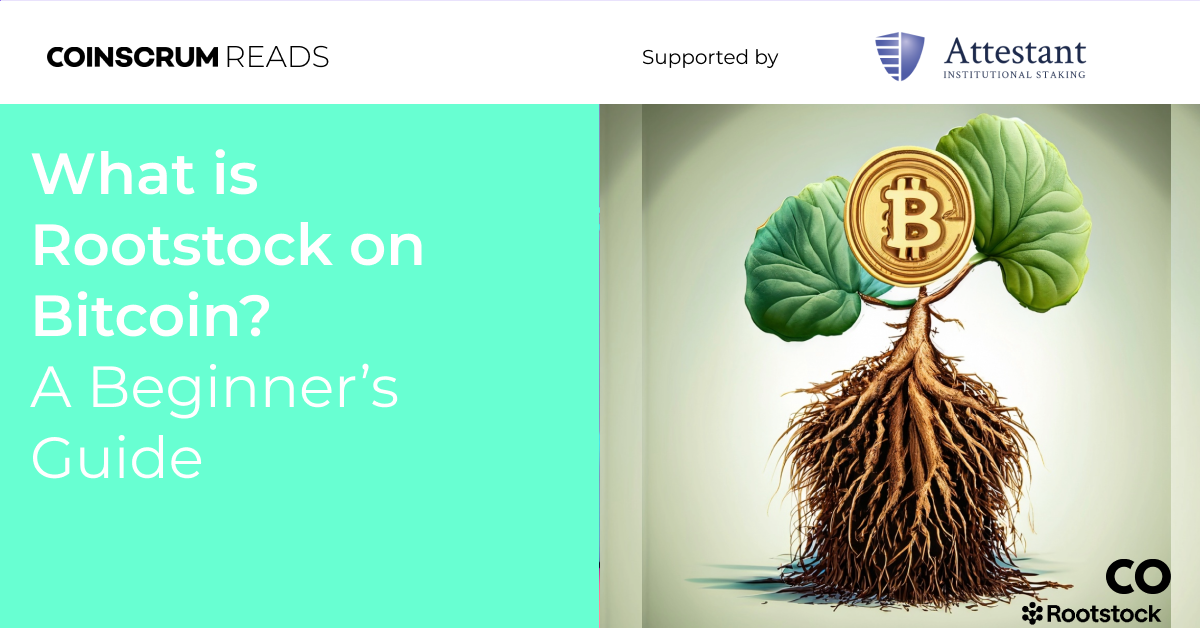What is Rootstock on Bitcoin? A Beginner’s Guide
Introduction Rootstock (RSK) is a smart contract platform secured by the Bitcoin network. It is a sidechain of Bitcoin, which means that it is a separate blockchain that is linked to the Bitcoin blockchain. Rootstock uses a two-way peg to allow users to lock up…
Introduction
Rootstock (RSK) is a smart contract platform secured by the Bitcoin network. It is a sidechain of Bitcoin, which means that it is a separate blockchain that is linked to the Bitcoin blockchain. Rootstock uses a two-way peg to allow users to lock up their Bitcoin on the Bitcoin blockchain and receive RBTC (Rootstock Bitcoin) on the Rootstock blockchain. RBTC can then be used to interact with smart contracts on Rootstock.
Why Rootstock?
Rootstock was created to address the limitations of Bitcoin as a smart contract platform. Bitcoin is a very secure and stable blockchain, but it is also relatively slow and expensive to use. Rootstock is much faster and cheaper than Bitcoin, and it also offers a number of other advantages, such as:
- Security: Rootstock is secured by the Bitcoin network, which means that it is one of the most secure smart contract platforms in the world.
- Decentralization: Rootstock is decentralized, which means that it is not controlled by any single entity.
- Interoperability: Rootstock is interoperable with Bitcoin, which means that users can easily move their Bitcoin between the two blockchains.
- Scalability: Rootstock is scalable, which means that it can handle a large number of transactions without sacrificing speed or security.
How does Rootstock work?
Rootstock uses a number of technologies to achieve its goals, including:
- Merged mining: Rootstock uses a technique called merged mining to secure its network. This allows Bitcoin miners to mine for both Bitcoin and RBTC at the same time.
- Smart contracts: Rootstock uses smart contracts to enable decentralized applications to be built on top of the Bitcoin network.
- Two-way peg: Rootstock uses a two-way peg to allow users to lock up their Bitcoin on the Bitcoin blockchain and receive RBTC on the Rootstock blockchain.
Pros and Cons of Rootstock
Pros:
- Secured by the Bitcoin network
- Decentralized
- Interoperable with Bitcoin
- Scalable
Cons:
- Still relatively new and untested
- Not as well-known as other smart contract platforms, such as Ethereum
Main people and companies involved in Rootstock
- Rootstock Labs: The company behind Rootstock
- RIF Labs: A company that provides infrastructure and services for the Rootstock ecosystem
- Sovryn: A decentralized finance (DeFi) platform built on Rootstock
How to interact with Rootstock
There are a number of ways to interact with Rootstock. One way is to use the RSKj wallet. The RSKj wallet is a web wallet that allows users to store RBTC, send and receive RBTC, and interact with smart contracts on Rootstock.
Another way to interact with Rootstock is to use the RSK Infrastructure Framework (RIF). The RIF is a suite of services that makes it easier for developers to build and deploy decentralized applications on Rootstock.
Conclusion
Rootstock is a smart contract platform secured by the Bitcoin network. It offers a number of advantages over other smart contract platforms, such as security, decentralization, interoperability, and scalability. Rootstock is still relatively new, but it has the potential to become a major player in the smart contract ecosystem.
Tips for Beginners
If you are new to Rootstock, here are a few tips:
- Start by learning about the basics of smart contracts and decentralized applications.
- Explore the RSK ecosystem to learn about the different projects and services that are available.
- Use the RSKj wallet or RIF to start interacting with Rootstock.
- Be aware that Rootstock is still relatively new and untested. Do your own research before investing in any project or service on Rootstock.
You may also like
How Does Bitcoin Work? – Bitcoin’s Simple Mechanics Explained
How Does Bitcoin Work? Bitcoin is a decentralized digital currency that was created in 2009. Unlike traditional currencies like the U.S. dollar that are controlled by central banks, Bitcoin has no central authority and operates on a peer-to-peer network. But how exactly does it work?…
The Advantages and Risks of Bitcoin – An Overview of the Pros and Cons
Bitcoin has been one of the hottest topics in finance and technology over the past few years. As the first and most well-known cryptocurrency, Bitcoin offers some intriguing advantages but also comes with considerable risks. This article provides a balanced look at the main pros…
What is Bitcoin Layer 2?
Bitcoin Layer 2 refers to a set of technologies that are built on top of the Bitcoin blockchain to improve its scalability, performance, and privacy. Layer 2 solutions do not modify the underlying Bitcoin protocol, but rather they use clever techniques to offload some of…
Blockchain Technology: Far More Than Just Bitcoin
Blockchain’s Wider Impact Blockchain technology has become synonymous with Bitcoin in recent years, but it actually has far broader applications beyond cryptocurrency. While Bitcoin introduced blockchain as a way to record financial transactions without a central authority, blockchains can be used to track, verify and…
Recommended
Subscribe to us
Understanding your dog for dummies cheatsheet
Recommended
Subscribe to us
Understanding your dog for dummies cheatsheet
